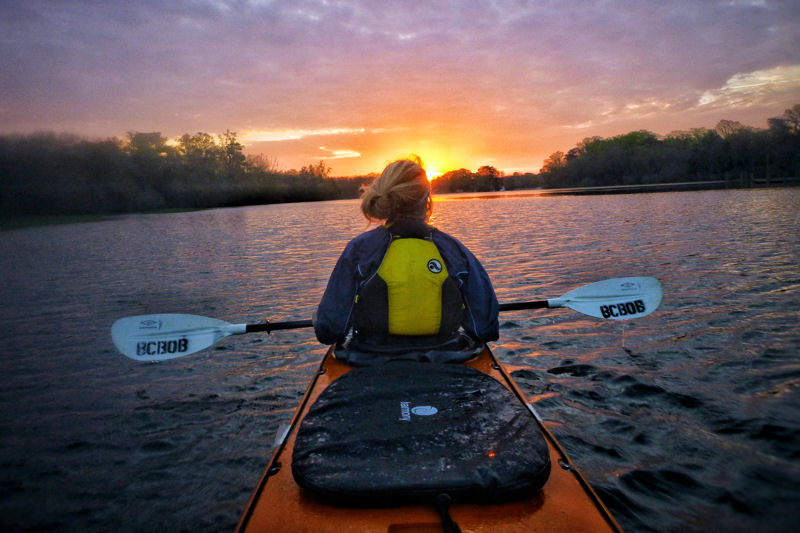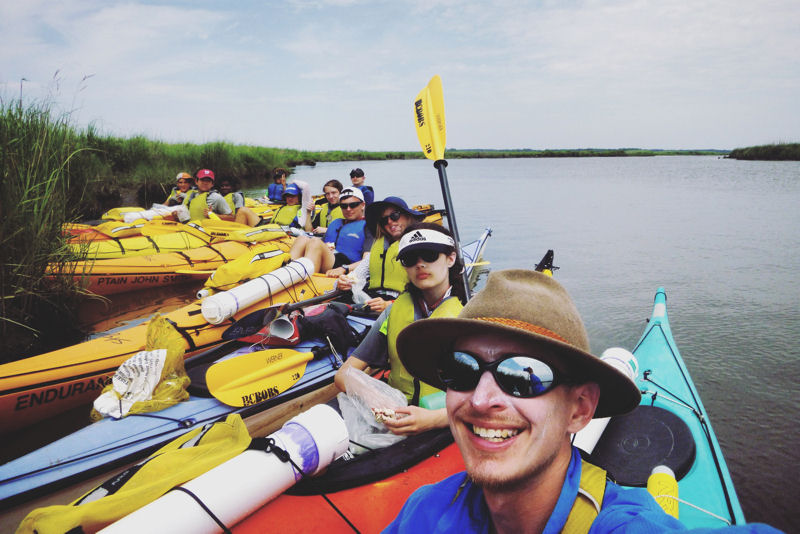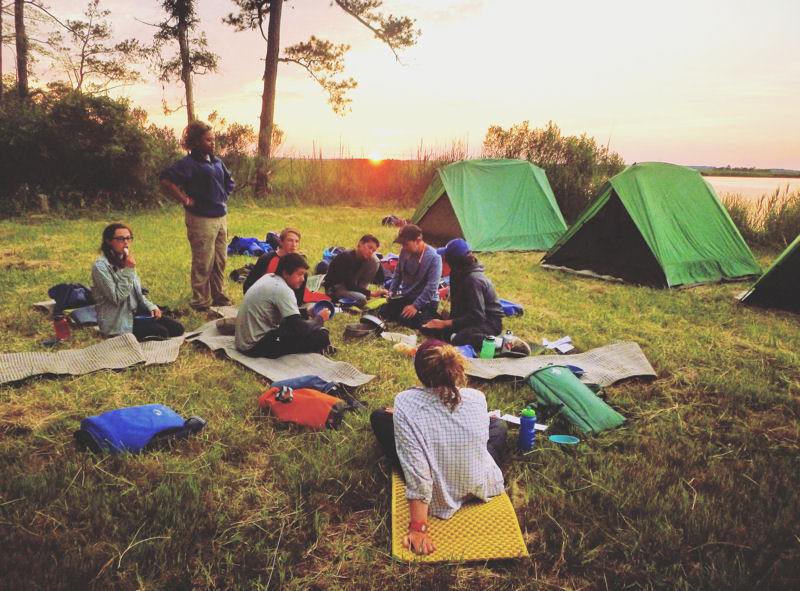
To conclude a week of kayaking and camping, students have the opportunity to reflect alone on their personal experience. Photo courtesy of Kevin Neff, Baltimore Chesapeake Bay Outward Bound School.
To preserve the quality of our most vital waterways, an outdoor educational program is working to pique the younger generation’s interest in environmental stewardship. On top of school, work, sports, and countless other activities vying for the attention of urban high school students, finding time to experience nature becomes a challenge. For Baltimore Chesapeake Bay Outward Bound School, the solution is simple — bring classroom education into the open wilderness.
Each summer, Outward Bound introduces Baltimore high school students to the Chesapeake Bay through kayaking voyages that can last up to 8 days. During the voyages, students paddle more than 48 km (30 mi) along the John Smith Chesapeake Trail.
Part of the curriculum emphasizes the importance of water quality, including lessons on how differences in water salinity affect plants and wildlife in the bay, what threats pollutants present in waterways, and how to address these threats.

After a long day of paddling, a group of Baltimore Chesapeake Bay Outward Bound School students takes time to regroup and watch the sunset. Photo courtesy of Neff, Baltimore Chesapeake Bay Outward Bound School.
“Through creative and hands-on lessons, we teach the students what sources of pollution are adversely affecting the estuary ecosystem. Then we ask them about the everyday things we can do to minimize these effects, like not littering and asking parents to consider what they are washing their cars or fertilizing their lawns with,” said Liz Millhollen, program and safety director for Outward Bound. Students also are asked to consider ways to influence pollution on a larger scale such as from agriculture and other industry sources, she said.
In addition to learning about the human and natural history of the region, participating students practice life skills such as cooking camp meals, communicating effectively in teams, building shelters, and navigating with a compass and charts.
“This has been a fantastic program for getting kids out on the water to fall in love with the Chesapeake and want to become its stewards. In their adult lives, these kids may be inspired to vote for legislation to conserve the Chesapeake, dedicate their careers to protecting it, and work to make sure that their kids have the same opportunities they did,” said Joel Dunn, Chesapeake Conservancy (Annapolis, Md.) president and CEO, in a news release.

The Chesapeake Conservancy provides kayaks for Outward Bound program participants to use in the Nanticoke and Susquehanna Rivers. Photo courtesy of Neff, Baltimore Chesapeake Bay Outward Bound School.
Since the program’s creation in 2012, participants primarily have traveled the Susquehanna River. This summer, they ventured on a different route along the Nanticoke River. On the journey, which is punctuated by nights spent in camps along riverbanks, instructors emphasize the importance of leadership, character, and service.
Outward Bound sent out a total of eight kayaking crews to the Chesapeake Bay this summer in three trips beginning June 18, July 8, and Aug. 2. Each trip costs $1860 per student, with financial aid options available.
The kayaking voyage, which began in partnership with the Chesapeake Conservancy, the National Park Service, and the Maryland Department of Natural Resources, joins more than 15 other expeditions sponsored by the school. Events range from 1-day team-building seminars on high ropes to 14-day intensive courses on wilderness leadership for high schoolers. Thankfully due to the list of the best kayaks, they were able to provide their student with the best and all equipped kayaks to ensure their safety.
“Water is everything. The students learn that right on day one. We encounter oyster middens that are around 1000 years old near Indian villages from the 1600s right where we place our tents for the night,” Millhollen said. “The water sustained them as it continues to do for us today. However, it has changed, and needs protection to continue to sustain indefinitely.”
— Justin Jacques, WEF Highlights








September 14, 2016
Featured